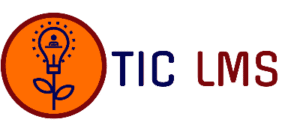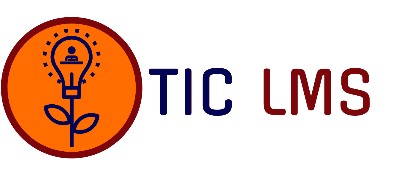2021 Biology
- One of the functions of the xylem is?
- A. strengthening the stem
- B. manufacturing food
- C. reducing loss of water
- D. conducting manufactured food
- Which of the statements below is not characteristic of wind-pollinated flowers?
- A. Stigmas are usually large and feathery
- B. Nectary is usually absent
- C. The pollen grains have rough spiny surfaces
- D. The flowers are not scented.
- Some of the features of an animal are scales, teeth, nares, and backbone. The animal is likely to be a?
- A. toad
- B. bird
- C. lizard
- D. rat
- Choose the sequence which represents the correct order of organisms in a food chain
- A. Grass, snake, toad, grasshopper, hawk
- B. Grass, grasshopper, toad, snake, hawk
- C. Grass, grasshopper, snake, toad, hawk.
- D. Grass, snake, grasshopper, toad, hawk
- Flatworms and roundworms are said to be invertebrates because?
- A. they are small animals
- B. they can live inside the vertebrates
- C. some of them are unicellular
- D. they have no backbones
- When a Spirogyra cell is immersed in a salt solution more concentrated than its cell sap, it?
- A. remains unchanged
- B. takes tip water and burst
- C. absorbs a little water
- D. loses water and shrivels
- Which of the following is NOT regarded as a pollutant on land or in the air?
- A. Smoke
- B. Nitrogen
- C. Noise
- D. Sulphur dioxide
- The initial volume of water poured into a bag of dry soil was 50ml and the amount that drained through was 35mI. The percentage water content of the fully soaked soil is therefore?
- A. 46.7
- B. 25.0
- C. 20.0
- D. 30.0
- When the original king and queen of termites die, they are replaced by
- A. the king and queen of another colony
- B. some adult reproductives from the same colony
- C. some adult workers which are specially fed to breed
- D. developing nymphs nurtured as secondary reproductives
- In demonstrating the importance of mineral elements in plants, the culture bottle must be darkened to?
- A. prevent algal growth in culture solution
- B. allow root growth
- C. prevent breakdown of mineral elements
- D. prevents photosynthesis in the root
- In the mammalian respiratory system. exchange of gases occurs in the?
- A. lungs
- B. bronchi
- C. bronchioles
- D. alveoli
- Aged erythrocytes are destroyed in the?
- A. pancreas
- B. liver
- C. lymph nodes
- D. kidney
- The villus in the small intestine is significant because it?
- A. increases the surface area for absorption
- B. increases the surface area for digestion
- C. assists in mixing digested food
- D. assists in filtering undigested food
- Which of the following food substances will produce a brick-red colour when warmed with Benedict’s solution?
- A. Glucose
- B. Starch
- C. Egg White
- D. Maltose
- The blood vessel which carries blood from the alimentary canal to the liver is the?
- A. hepatic artery
- B. hepatic vein
- C. hepatic portal vein
- D. mesenteric artery
- Which of the following is TRUE of the process of conjugation in Paramecium?
- A. Micronucleus disintegrates
- B. Each ex-conjugant divides only once
- C. Macro nucleus undergoes division
- D. Each micronucleus divides twice
- People who suck petrol with their mouths run the risk of increasing in their blood the concentration of
- A. iron
- B. lead
- C. calcium
- D. magnesium
- Which of the following is a measure for the control of bilharzia?
- A. Cutting low bushes around homes
- B. Application of molluscicides in water bodies
- C. Screening windows and doors with mosquito nets
- D. Application of herbicides in water bodies
- The appendicular skeleton is composed of the pectoral girdle?
- A. pelvic girdle, fore and hind limbs
- B. pelvic girdle and fore limbs
- C. lumbar vertebrae and pelvic girdle
- D. lumbar vertebrae, fore and hind limbs
- A freshwater plant such as water lily can solve the problem of buoyancy by the possession of?
- A. aerenchyma tissues
- B. dissected leaves
- C. thin cell walls of the epidermis
- D. water-repelling epidermis
- The correct sequence for the perception of smell in mammals is?
- A. chemicals –> olfactory nerve endings –> brain
- B. dissolved chemicals –> nasal sensory cells –> brain
- C. chemicals –> mucus membrane sensory cells –> brain
- D. dissolved chemicals –> sensory cells –> olfactory nerve –> brain
- I. High birth rate and high immigration rate
- Low birth rate and high immigration rate
III. Low mortality rate and low emigration rate
- High mortality rate and high emigration rate.
Which combination of the above can cause rapid over-crowding in climax biotic communities and human settlements?
- A. II and III
- B. I and III
- C. I and IV
- D. I and II
- The number of plant species obtained from a population study of a garden is as follows: Guinea grass(15), Ipomoea spp(5), Sida spp (7) and Imperata spp (23)
What is the percentage of occurrence of Imperata spp?
- A. 35%
- B. 16%
- C. 46%
- D. 23%
- When a marine fish was taken from the ocean and put in a tank of fresh water, it died after a short period because?
- A. the tank was too small compared to the large-ocean
- B. the body cells of the fish swelled and burst as a result of the hypotonic fresh water
- C. the body cells of the fish shrank as their sap was hypertonic to the freshwater
- D. there was no food in the tank, so the fish starved
- If a DNA strand has a base sequence TCA, its complementary strand must be?
- A. ATG
- B. TAG
- C. GAT
- D. AGT
- The two key cations involved in the action potential of nervous transmissions are?
- A. Na+ and Fe2+
- B. Mg2+ and K+
- C. Na+ and K+
- D. Fe2+ and Mg2+
- I. Rattus rattus. Il. Agama agama III. Bufo regularis IV. Tilapia zillii
The order of evolutionary advancement of the above vertebrates is?
- A. I, II, III, IV
- B. I, IV, III, II
- C. II, III, IV, I
- D. IV, III, II, I
- Which of the following produces both hormones and enzymes?
- A. Ileum
- B. Pancreas
- C. Gall bladder
- D. Kidney
- The correct sequence of the movement of urea during urine formation is?
- A. glomerulus —> Bowman’s capsule -> convoluted tubule —> Henle’s loop -> collecting- tubule
- B. glomerulus -> Bowman’s capsule -> convoluted tubule -> Henle’s loop -> convoluted tubule -> collecting tubule
- C. convoluted tubule -> glomerulus –> Nettle’s loop -> Bowman’s capsule->collecting tubule
- D. convoluted tubule -> Bowman’s capsule -> Henle’s loop -7> glomerulus -> collecting tubule
- The order of passage of food in the digestive system is
- A. ileum –> caecum ->large intestine -> rectum
- B. ileum –> colon –> caecum -> rectum
- C. large intestine –> ileum -> caecum -> rectum
- D. colon -> caecum -> ileum -> rectum
- Mass of a crucible = 10g,
Mass of a crucible and soil before heating =29g
Mass of a crucible and soil after heating = 18g
From the information above, determine the percentage of water in the given soil sample?
- A. 20%
- B. 25%
- C. 40%
- D. 60%
32
- Stomata –> Spirogyra
- Alveoli –> Earthworm
III. Malpighian tubule -> Mammal
- Contractile vacuole -> Protozoa
Which of the above structures is correctly matched with the organisms in which it is found?
- A. II
- B. I
- C. IV
- D. III
- The sequence of the one-way gaseous exchange mechanism in a fish is?
- A. mouth –> operculum -> gills
- B. mouth -> gills > operculum
- C. operculum > gills -> mouth
- D. gills -> operculum –> mouth
- Which of the following is true in blood transfusion?
- A. A person of blood group AB can donate blood only to another person of blood group AB
- B. Persons of blood groups A and B can donate or receive blood from each other
- C. A person of blood group AB can receive blood only from persons of blood group A or B
- D. A person of blood group O can donate only to a person of blood group O
- The plants that grow in deserts or very dry areas are referred to as?
- A. hydrophytes
- B. epiphytes
- C. xerophytes
- D. mesophytes
- The most abundant group of organisms in the animal kingdom?
- A. Mammalia
- B. Aves
- C. Insecta
- D. Annelida
- The movement of part of a plant in response to external stimulus of no particular direction is?
- A. taxism
- B. tropism
- C. haptotropic movement
- D. nastic movement
- The mutation theory of organic evolution was propounded by?
- A. Gregor Mendel
- B. Hugo de Vries
- C. Jean Lamarck
- D. Charles Darwin
- If both parents are heterozygous for a trait. the probability that an offspring will be recessive for that trait is?
- A. 1/2
- B. 1/4
- C. 1
- D. 3/4
- Blood circulation in a mammal is said to be double because?
- A. it passes twice through the heart in a complete circuit
- B. it moves in both arteries and veins
- C. it circulates in both the heart and other organs
- D. the heart contains auricles and ventricles

